Proving that the next generation of designers have their eyes on solving some of the world’s most pressing issues – waste and plastic use among them – we spend five minutes with rising talent Maddison Ryder to hear more about her award-winning Lettuce Eat project.

Plastic use and waste are just a couple of the big challenges facing humanity. But all hope is not lost as there is a new generation emerging and the designers among them are already finding ways to change the status quo. Maddison Ryder is a recent graduate of RMIT’s Industrial Design program and her final year project – Lettuce Eat – just won in the Tertiary category in the Victorian Design Challenge. With plenty of buzz around her and her invention, we set about asking her some questions about the project and where material development is heading.
Maddison Ryder: In response to the abundant amount of waste seen in Australia, Lettuce Eat demonstrates how food waste can be transformed into a material of workability and adaptability. Lettuce Eat is a collection of biodegradable single-use plates made completely from waste iceberg lettuce.
This idea came to fruition upon understanding that almost one-third of all food grown for consumption in Melbourne, Australia is lost or wasted. With further research, it was uncovered that 41 per cent of this waste is due to the consumer directly. Observing the food discarded within my own home, I decided to divert fruit and vegetables from the bin to create materials from this waste.
After months of experimentation, I discovered that the humble lettuce leaf could be transformed into a strong and beautiful material by means of blending and dehydrating. The final plate is then laser cut and assembled to create this striking geometric form which is then finished with a food safe and water resistant coating.
Presenting Lettuce Eat to a broad audience has been an incredible experience. Although it was nerve-racking standing on an illuminated stage in front of an esteemed jury and a sea of strangers, as I began to speak the nerves dissipated as my passion for what I have created came out. The support and encouragement from the public has been fantastic and is demonstrating that inventions like my lettuce plates are not only being accepted but shows that there is a demand for these highly sustainable products.
Experimental materials will soon become the norm. At this point in time, projects just like Lettuce Eat are educating the public to change their perceptions from what waste is, to what it can and should be. With this altered view we can grow to not only support, but also accept these materials so they can replace plastic and paper products in the near future.
It is difficult to be completely environmental when unsustainable products without adequate recycling systems surround us. Therefore, as a designer, I believe that it is our responsibility to design products that support a closed loop system. Products that ensure all elements of its creation, from concept to use, to disposal are considered with sustainability as a key driver. When all areas of a product are environmentally conscious, practising an eco-friendly lifestyle becomes a no brainer for the consumer.
Follow Maddison on Instagram @eatwasterepeat.
Get more sustainability inspiration here. And for a weekly design dose, join our mailing list.
INDESIGN is on instagram
Follow @indesignlive
A searchable and comprehensive guide for specifying leading products and their suppliers
Keep up to date with the latest and greatest from our industry BFF's!

Welcomed to the Australian design scene in 2024, Kokuyo is set to redefine collaboration, bringing its unique blend of colour and function to individuals and corporations, designed to be used Any Way!
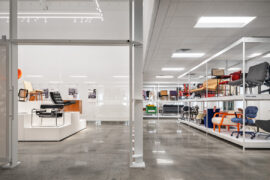
The undeniable thread connecting Herman Miller and Knoll’s design legacies across the decades now finds its profound physical embodiment at MillerKnoll’s new Design Yard Archives.

London-based design duo Raw Edges have joined forces with Established & Sons and Tongue & Groove to introduce Wall to Wall – a hand-stained, “living collection” that transforms parquet flooring into a canvas of colour, pattern, and possibility.
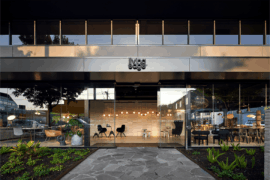
For Aidan Mawhinney, the secret ingredient to Living Edge’s success “comes down to people, product and place.” As the brand celebrates a significant 25-year milestone, it’s that commitment to authentic, sustainable design – and the people behind it all – that continues to anchor its legacy.
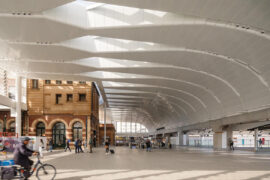
Now in their 19th year, the Architecture & Design Sustainability Awards are Australia’s leading program dedicated to recognising innovation and excellence in sustainable architecture and design.
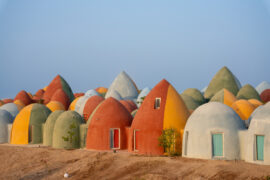
The independent Master Jury of the 16th Award Cycle (2023-2025) has selected seven winning projects from China to Palestine.
The internet never sleeps! Here's the stuff you might have missed

The Godrej Woods Clubhouse is the jewel in the crown of a residential development in Noida, India, offering every facility curated with style and finesse by Studio IAAD.
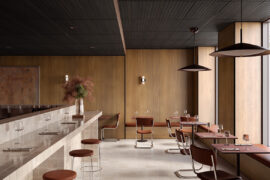
Australian designed and manufactured, Laminex Architectural Panels transform timber design aesthetics with cutting-edge technology

Melbourne is the destination and Saturday 6th September is the date – get ready for this year’s one-day design extravaganza with a full guide to what’s on.
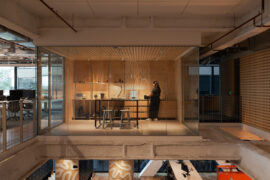
The Arup Workplace in Perth/Boorloo, designed by Hames Sharley with Arup and Peter Farmer Designs, has been awarded The Work Space at the INDE.Awards 2025. Recognised for its regenerative design, cultural authenticity, and commitment to sustainability, the project sets a new benchmark for workplace architecture in the Indo–Pacific region.